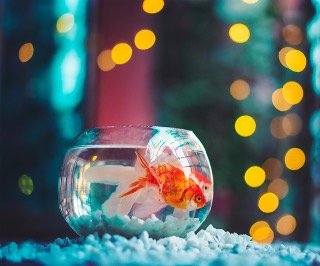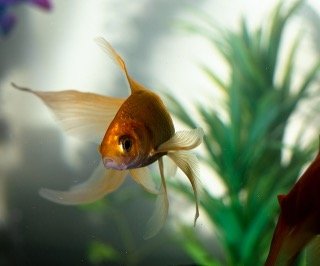
Introduction
The fact that fancy goldfish are extremely prone to developing disorders of one or both swim bladders is one of the most prevalent issues with them. Depending on the underlying reason, swim bladder disorders are typically not fatal, and there are a number of treatments available to help your goldfish recover.
you may also like to read Do Goldfish Need a Filter?
Explained: Swim Bladder Disorder
Goldfish use their swim bladders, which are air-filled organs, to stay balanced and buoyant in the water. The largest swim bladder, which opens directly into the goldfish’s gut, is typically located close to the back. To swim around the tank in a regulated manner, the swim bladder organs of the goldfish will inflate or deflate.
After a meal, goldfish frequently gasp at the surface to maintain zero buoyancy. The swim bladders of fancy goldfish have a tubular shape and are tightly packed within their spherical bodies.
Symptoms of Swim Bladder Disorder
(i) Swimming upside down
(ii) Floating to the surface uncontrollably
(iii) Swims with its head down
(iv) Sinking to the bottom
(v) Swimming lopsided
(vi) Rashes and wounds from bottom-sitting or exposure to the air
(vii) Passes empty poop casings
(viii) Swollen stomach
you may also like to read Which Kind of Substrate is Best for My Goldfish Tank?
Treatment of Goldfish Swim Bladder Disorder
Step 1: Transfer the sick fish to a quarantine tank. By doing this, you can avoid putting any medication in the main tank.
Step 2: Gradually raise the temperature to between 24 and 26°C using an aquarium heater.
Step 3: To each gallon of water, add two teaspoons of Epsom salts.
Step 4: Use NT Labs Swim Bladder Treatment or Seachem Focus to treat the swim bladder for bacteria.
Step 5: If a bacterial problem has been ruled out, boil, deshell, and squeeze the pea between your fingers for the goldfish to eat.
Step 6: To release the trapped air, gently massage the goldfish’s tummy.
Try these Preventative Measures
(i) Use a filter and regular water changes to keep the goldfish tank’s water clean.
(ii) Different bacteria that could infect the swim bladder organ thrive in filthy water.
(iii) Along with algae pellets and blanched green veggies, feed high-quality meals.
(iv) Reduce your goldfish’s protein intake to prevent constipation.
(v) Do not keep goldfish in tall aquariums.
The Real Story Behind Fasting Goldfish
In addition to eating peas, many goldfish owners advise fasting the fish when they have swim bladder disorder or assert that doing so once per week is a prophylactic step. The stomach will return to its previous size when you fast goldfish or deprive them of food because it is not required to support a meal. The goldfish’s stomach will quickly enlarge when you start feeding them again, which can result in a stomachache and encourage bloating.
Infection of One or Both Swim Bladders by Bacteria
A bacterial infection runs the danger of impairing the swim bladder organs. One of the most frequent causes of swim bladder problem in goldfish is this. The main source of bacterial infections that might infect the swim bladders is dirty water. Fortunately, this is easily treatable with drugs that deal with Pseudomonas or Aeromonas bacteria.
Swim Bladder Organs With Genetic Defects
Overbreeding of fancy goldfish results in aberrant body types and characteristics. As a result, the organs are compressed into an abnormal shape. One swim bladder organ in fancy goldfish is frequently genetically deflated. The goldfish will experience lifelong chronic swim bladder problems as a result of this.
Constipation
With a poor food, constipation is a regular problem in goldfish. Feeding goldfish a staple food with a lot of protein is not recommended. Algae and plant debris are essential to the digestion of goldfish. Your goldfish are more prone to develop swim bladder issues if you give them more live foods and commercial mixtures made for carnivorous fish.
Conclusion
Despite the fact that goldfish frequently experience problems with their swim bladder, if you take the right precautions and feed them a high-quality diet, your goldfish will be less likely to experience any swim bladder disorders. Try to only keep fancy goldfish that have a reasonably natural body shape comparable to common or comet goldfish because fancy goldfish with atypical body types are more likely to experience this problem.





